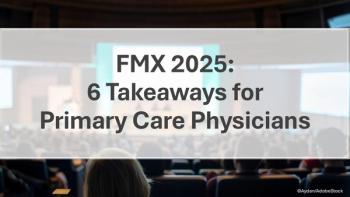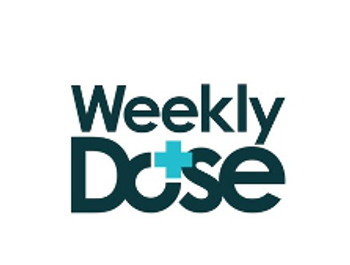
HIV/AIDS in Older Adults: Rising, and Unchecked
HIV infections are increasing most rapidly among Americans over age 65. Yet the CDC doesn't recommend routine screening in this age group, many older people are unaware of their HIV-positive status, and studies show that they may benefit more than younger patients from antiretroviral therapy.
Right now, at least 1.1 million Americans are living with HIV.1 While rates have remained relatively stable, the number of older people infected with the virus is growing.
New data from by the Centers for Disease Control and Prevention (CDC) show that that largest increase in rates of HIV diagnoses from 2008 to 2010 -- 26% -- is among people ages 65 and older (from a rate of 68.3 in 2008 to 85.7 in 2010).2
Unfortunately, many older people are unaware of their risk, or of their HIV status, and current CDC guidelines still don’t recommend routine opt-out HIV screening for Americans over age 65.
Thus diagnosis and treatment are often delayed, leading to worse outcomes -- even as recent studies show older adults may benefit more from antiretroviral therapy (ART) than younger adults, and that earlier diagnosis is likely to save lives among those over age 50.3
Routine HIV screening should be offered to adults of every age, say guidelines issued in 2012 by the Work Group for the HIV and Aging Consensus Project,4 a multidisciplinary panel formed by the American Geriatrics Society (AGS).
Yet screening after age 65 is not common because health care professionals may not think it’s needed or is cost-effective, says Mark J. Simone, MD, an Instructor of Medicine at Harvard Medical School who helped write the guidelines.
Awareness and Risk
Lack of awareness by both the general population and providers is still the greatest risk factor for older adults to contract HIV, says Dr. Simone, a geriatrician with a special research interest in HIV.5,6,
“Health care professionals typically don’t see older people as being sexually active or at risk for HIV or other STDs, so they are less likely to consider screening or offer counseling on safer sex practices,” comments Dr. Simone. But a substantial number of older people remain sexually active well into their 60s and 70s -- even those with HIV,7 aided by the availability of erectile dysfunction drugs like sildenafil (Viagra).
Adults over 65 may not see HIV as a threat and fail to practice safe sex. “They may be less aware of the need for condoms, they’re not worried about pregnancy, and they are less savvy about the other risks for STDs. They grew up in an era where people were not concerned about HIV,” he says.
Older women in particular may be less comfortable insisting on condom use,8 especially if they find themselves in a new relationship after having been married for many years. The vaginal atrophy and thinning of tissues that accompany menopause can cause tearing of vaginal walls, making older women more vulnerable to HIV, he adds.
The same basic HIV risk factors apply to people of any age, Dr. Simone stresses. “Any kind of high risk sexual behavior, having multiple partners, men who have sex with men, unprotected sex, prostitution, IV drug use, can lead to HIV transmission.”
The CDC estimates that 10.8% of the roughly 50,000 incident cases of HIV in the US annually occur among people over age 50.9
But since older people and providers may be uncomfortable talking about sex and sexual risk factors, “there’s very little conversation about HIV or other STDs and prevention campaigns are usually targeted to youth and younger adults,” says Dr. Simone.
Consequences of Carelessness
The consequences of such inattentiveness to older adults needs could be dire. In 2009, people aged 50 and older accounted for 33% of Americans living with HIV, and by 2020 the CDC projects they will make up half of all HIV-positive patients.10
There are no data available for European countries, “but it is known that within western and central Europe, the UK together with France, Italy, and Spain continue to have large HIV epidemics,” HIV researchers noted in 2009.11
Among those over 50 in the US, men who have sex with men (MSM) bear the greatest burden of HIV and AIDS, but African-Americans and Hispanics are at higher risk.
While making up 12% of the US population, African-Americans account for an estimated 44% of new HIV infections.12 Hispanics/Latinos constitute 16% of the population, yet account for 21% of new HIV infections.3 Both groups are also at increased risk of dying from AIDS.13
“In the general population, the risk of AIDS death is 7 times higher in Blacks compared to whites and 12 times higher in those over 50 compared to whites,” remarks Dr. Simone. “For Hispanics, the risk of dying of AIDS is 3 times higher than whites and 5 times greater among those over 50. It all goes back to a lack of awareness and health care disparities.”14
Aging, HIV, and HAART
Today’s highly-active antiretroviral therapies (HAART) and combination therapies have turned HIV into a chronic disease for many -- greatly extending life. At the same time, some experts believe HIV itself may “accelerate” aging so that comorbid conditions associated with older age, such as cardiovascular disease (CVD) or cancer, affect HIV-positive people at a younger age.7
HIV infection may impair immune system function in many of the same ways as aging. For example, by destroying CD4+ T cells HIV diminishes capacity of the immune system to police the body for threats.15 A low CD4 cell count has been found to be an independent risk factor for CVD, with a comparable attributable risk to traditional risk factors such as smoking.5
“As all of us age, it’s normal for the immune system to also decline in function, specifically with T-cells. And with HIV there’s also a change and decline in T-cell function,” observes Dr. Simone. “So the combination of HIV plus aging may be a double ‘hit’ to the immune system.”
Complicating matters: People over 65 living with HIV face the same age-related conditions as their non-infected peers – CVD, elevated cholesterol, insulin resistance, and diabetes – diseases which may not only be adversely impacted by HIV but also by its treatments.5
Studies show that protease inhibitors (PIs) boosted by ritonavir, as well as the antiretrovirals (ARVs) abacavir and didanosine, can increase the risk of coronary artery disease.16 Some PIs and ARVs can also induce or increase insulin resistance, worsening diabetes.17 PIs can also elevate triglycerides and LDL cholesterol, as can non-nucleoside reverse transcriptase inhibitors (NNRTIs), particularly efavirenz.5
Some PIs are contraindicated with the popular cholesterol-lowering drugs simvastatin and lovastatin, since they are metabolized by the same liver enzyme and increase drug levels, leading to muscle breakdown and liver damage.5
The polypharmacy that often goes hand in hand with multiple chronic diseases in later life can also have its own toxicities, especially for those with HIV.
Better Care for HIV Later in Life
While people over age 65 with HIV may have higher mortality due to late diagnosis,3 older adults seem to respond better to antiretroviral therapy.
“It seems that older adults achieve better viral load than younger people, while it’s just the opposite with CD-4 counts. Some of that may be due to presenting later in the course of their infection,” explains Dr. Simone. “But, in general it’s felt that older adults respond just as well, if not better to therapy.
A 2013 retrospective cohort study among 63,805 adults from England, Wales, and Northern Ireland diagnosed with HIV between 2000 and 2009 (5,683 of whom were ≥50 years), concludes that earlier diagnosis coupled with prompt treatment has a greater impact on short-term mortality in patients over 50 and substantially reduces deaths.3
Older patients have better adherence compared to their 20 and 30-something counterparts. A prospective study from France found no difference in the rate of HAART discontinuation among older patients compared to younger patients.18 In fact, the older HIV patients stuck with their regimens despite a higher risk of adverse events, a greater risk of toxicities (including neurologic, psychiatric, and hematologic effects), and drug-drug interactions with HIV treatment due to normal aging.15
Having a pharmacist as part of the care team and obtaining all medications at one local pharmacy (preferably one that specializes in HIV) can maximize drug adherence and minimize the effects of polypharmacy, Simone recommends.
But in the end, early and effective HIV treatment depends on early recognition and screening of older adults. The Health and Human Services’ Panel on Antiretroviral Guidelines for Adults and Adolescents also recommends screening for all adults in its 2012 guidelines for older adults. 19
Dr. Simone has an additional recommendation: “Whenever an older person has unexplained weight loss, generalized fatigue, dementia, or confusion, clinicians should consider HIV as well as age-related comorbidities and offer screening,” says Dr. Simone. “If someone presents with vague symptoms that can’t be easily explained by an existing medical condition, it could be an HIV-related opportunistic infection, and raise red flags.”
References:
REFERENCES
1. Centers for Disease Control and Prevention (CDC).
2. Centers for Disease Control and Prevention.
3. Davis HJD, Smith R, Brown A, et al.
5. Simone MJ, Appelbaum J.
6.
7. Onen NF, Shacham E, Stamm KE, Overton ET.
8. Lindau ST, Leitsch SA, Lundberg KL, et al. <a href="http://online.liebertpub.com/doi/abs/10.1089/jwh.2006.15.747>Older women's attitudes, behavior, and communication about sex and HIV: a community-based study. J Womens Health (2006) 15:747-753
9. Brooks JT, Buchacz K, Gebo KA, Mermin J.
10. CDC. HIV Surveillance Report, 2011.Retrieved August 1, 2013 from http://www.cdc.gov/hiv/library/reports/surveillance/index.html
11. Ho JE, Hsue PY.
12. Centers for Disease Control and Prevention. HIV in the United States: At A Glance. 2010. Retrieved August 7, 2013 from http://www.cdc.gov/hiv/statistics/basics/ataglance.html
13. Linley L, Prejean J, An Q, et al.
14. CDC HIV Surveillance Report http://www.cdc.gov/hiv/library/reports/surveillance/index.htm. Data source provided by Mark J. Simone, MD
15. Effros RB, Fletcher CV, Gebo K, et al.
16. Friis-Moller N, Reiss P, Sabin CA, et al,
17. Aberg JA, Gallant JE. Anderson J, et al.
18. Cuzin L, Delpierre C, Gerard S, et al.
19. Panel on Antiretroviral Guidelines for Adults and Adolescents:
Newsletter
Enhance your clinical practice with the Patient Care newsletter, offering the latest evidence-based guidelines, diagnostic insights, and treatment strategies for primary care physicians.






























































































































































































































































































